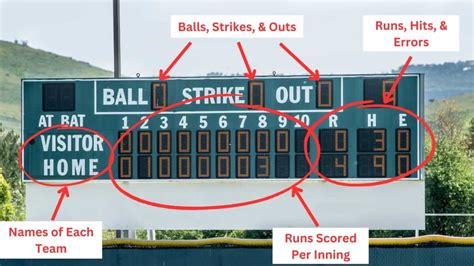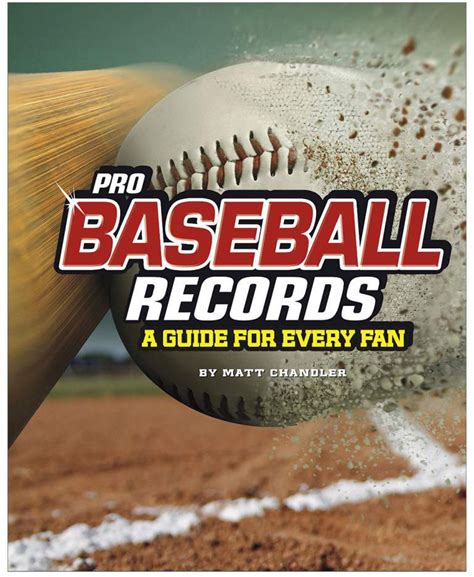Explore the fundamentals of baseball signs, learn to identify and decode them, and enhance your skills while avoiding common mistakes.How To Read Baseball Signs: A Guide For Players
In the fast-paced world of baseball, reading signs is a crucial skill that can elevate your gameplay and foster better communication between teammates. Whether you’re on the mound or at the plate, understanding the intricate language of signs allows players to anticipate plays and make strategic decisions. In this comprehensive guide, we will break down the basics of baseball signs, helping you identify pitching and hitting signals, and walk you through a step-by-step process for decoding them. Along the way, we will highlight common mistakes to avoid and offer tips to improve your sign-reading capabilities. By mastering this vital aspect of the game, you will enhance your performance on the field and contribute significantly to your team’s success. Let’s delve into the art of reading baseball signs and take your skills to the next level!
Understanding The Basics Of Baseball Signs
Baseball signs are an integral part of the game, serving as a silent communication method between players and coaches. Mastering the art of reading these signs is crucial for both offensive and defensive strategies. Understanding the basics involves recognizing the purpose, types, and standard signals used on the field.
The primary objective of baseball signs is to convey information rapidly without alerting the opposing team. Signs typically cover various aspects, including pitch types, hitting strategies, base stealing, and defensive alignments. Players need to stay focused and alert, ensuring they can interpret signs accurately when they are given.
Baseball signs often consist of a series of gestures or signals that can employ the hands, body movements, or even the eyes. For instance, a coach may touch their leg to indicate a specific pitch or wave their arms to signal a hit-and-run strategy. These signs are meant to be concise and definitive to allow for quick understanding during the fray of the game.
Players should also note that signs can vary significantly between teams, and each coach may develop their own unique system. Therefore, it is essential for players to familiarize themselves with their team’s signs during practices and meetings. This preparation can help enhance their ability to respond effectively during actual gameplay.
Understanding the basics of baseball signs involves recognizing their importance, types, and the general practices used to convey messages swiftly and discretely. As players continue to learn how to read these signs properly, they’ll find that they can significantly improve their in-game performance.
How To Identify Pitching And Hitting Signs
Identifying pitching and hitting signs is crucial for a team’s success on the field. Players must develop a keen understanding of the signals exchanged between coaches and players to effectively execute strategies. Here’s a guide on how to identify these signs:
1. Know the Sign Variations
Each team has its own set of signs that may include hand signals, body language, or coded phrases. Familiarize yourself with the variations used by your coach, as this will provide a solid foundation for interpretation.
2. Observe the Signs Given to Pitchers
Typically, the catcher provides pitch calls to the pitcher. Look for common indicators like finger gestures, which might signal the type of pitch (fastball, curveball, etc.). Pay attention to whether the catcher touches their knee, which often signals specific pitch types.
3. Recognizing Hitting Signals
Hitting signs usually come from the coach, either in the dugout or at third base. These can involve simple gestures, such as touching the cap or signaling with a bat. Understanding these cues is vital for executing strategies like bunting or stealing bases.
4. Context Matters
The context of the game plays a significant role. For instance, during high-pressure situations, signals might change or become more intricate. Stay alert to shifts in the game dynamic that could influence the signs being used.
5. Collaborate with Teammates
Communicate with teammates to develop a shared understanding. Discuss signs during practice sessions so everyone is on the same page. A unified approach helps prevent confusion during games.
6. Keep Practicing
As with any skill, practice is key. Run drills focusing on sign recognition to enhance your ability to decode them in real-time. The more you practice, the quicker you’ll become at identifying and responding to signs during a game situation.
By implementing these strategies, players can better grasp how to interpret pitching and hitting signs, ultimately leading to improved performance on the diamond.
Decoding The Signs: A Step-By-Step Process
Decoding baseball signs can be a daunting task at first; however, with practice and understanding, players can learn to interpret the signs efficiently. Here’s a step-by-step guide on how to decode the signs effectively:
- Know the Key Players: Familiarize yourself with the players involved in signaling. Typically, the coach or catcher will be the one providing the signs, and you must pay attention to their movements and gestures.
- Identify the Context: Understanding the game situation is essential. Determine whether the team is in a hitting or pitching scenario, as this will give context to the signs provided.
- Observe the Signals: Watch for any visuals or physical gestures made by the sign sender. These can include hand signals, touches to the body, or even held items such as a hat or glove. Make sure to confirm the signs for both offensive and defensive strategies.
- Look for Patterns: Signs often follow a certain pattern, which can help in predicting what comes next. Make note of any recurring signs during the game and their outcomes.
- Communicate with Team Members: Always keep an open line of communication with your teammates. If you believe you have decoded a sign, share your interpretation and modify it if necessary based on their feedback.
- Practice: Like any skill, decoding signs takes practice. Engage in drills with teammates to simulate game situations. The more you practice, the more intuitive reading signs will become.
By following these steps, players can enhance their ability to decode baseball signs, ultimately improving their overall performance in the game. Remember, consistent practice and communication with your team are key components in mastering the art of decoding signs.
Common Mistakes When Reading Baseball Signs
Reading baseball signs effectively is crucial for players, but common mistakes can lead to misunderstandings on the field. Here are some of the typical errors to avoid:
- Rushing The Process: One of the most frequent mistakes is attempting to decode signs too quickly. Take the time to observe and understand each signal carefully.
- Overlooking Context: Failing to consider the game context—such as the score, inning, or situation—can lead to incorrect conclusions about the signs being given.
- Ignoring Non-Verbal Cues: Players often focus solely on the hand signals and neglect other non-verbal cues such as the pitcher’s body language or the coach’s positioning.
- Assuming Universal Significance: Believing that signs mean the same thing across different teams can be misleading. Always be aware that individual teams often have unique sign systems.
- Not Practicing Enough: Just like any skill, reading signs requires practice. Failing to simulate game situations during practice can hinder a player’s ability to adapt during games.
- Miscommunication: Assuming that teammates will interpret signs in the same way can create confusion. It’s essential to have clear communication to ensure everyone is on the same page.
Paying attention to these common mistakes can greatly enhance your ability to read baseball signs effectively. With the proper focus and practice, you’ll improve your game strategy and on-field performance.
Improving Your Skills In Reading Signs Effectively
Once you have a grasp of the basics, the next step is to enhance your skill set in reading baseball signs effectively. Here are some strategies to help you improve:
- Practice Regularly: The more you practice reading signs during games and practice sessions, the better you will become. Regular exposure will help you recognize patterns and signals quickly.
- Collaborate With Teammates: Work with your teammates to review signs and signals. Discuss situations where playing strategies might change and how signs can vary.
- Film Review: Watching game footage can be very beneficial. Analyze how signs were executed in real-game scenarios and reflect on your understanding of the signals.
- Communicate Efficiently: Ensure that you maintain open lines of communication with your coach and teammates regarding signals. This visibility aids in understanding the full context of the signs being used.
- Stay Focused During Games: Maintaining concentration throughout the game is crucial. Avoid distractions that might hinder your ability to catch important signals from coaches.
- Stay Updated on Strategies: As the game evolves, so do the strategies associated with signs. Continuously educate yourself about the latest tactics and approaches used in baseball.
By enhancing your skills in these ways, you can significantly improve your ability to interpret signs and contribute positively to your team’s performance. Remember, effective communication and teamwork are invaluable in this process.
Frequently Asked Questions
What are baseball signs?
Baseball signs are a series of gestures or movements used by coaches and players to communicate plays or strategies without using verbal communication.
Why is it important to understand baseball signs?
Understanding baseball signs is crucial for players as it helps them execute game strategies effectively and avoid giving away the team’s intentions to the opposing team.
How can players effectively learn baseball signs?
Players can learn baseball signs through team meetings, practice sessions where signs are practiced repetitively, and by watching and asking questions from their coaches or experienced teammates.
What are some common signs used in baseball?
Common signs include signals for stealing bases, bunting, hit-and-run plays, and when to take a pitch. Each team has its own system of signs.
What should a player do if they are unsure about a sign?
If a player is unsure about a sign, they should stay calm, maintain their position, and discreetly ask their teammates or coaching staff for clarification during a pause in the game.
How can players decode signs during a game?
Players can decode signs by closely observing the movements of their coaches, understanding the context of each sign, and recognizing patterns that may indicate specific plays.
What role does teamwork play in using baseball signs?
Teamwork is essential in using baseball signs as it requires all players to be on the same page, trust each other’s understanding of the signs, and execute plays seamlessly to ensure success during the game.









